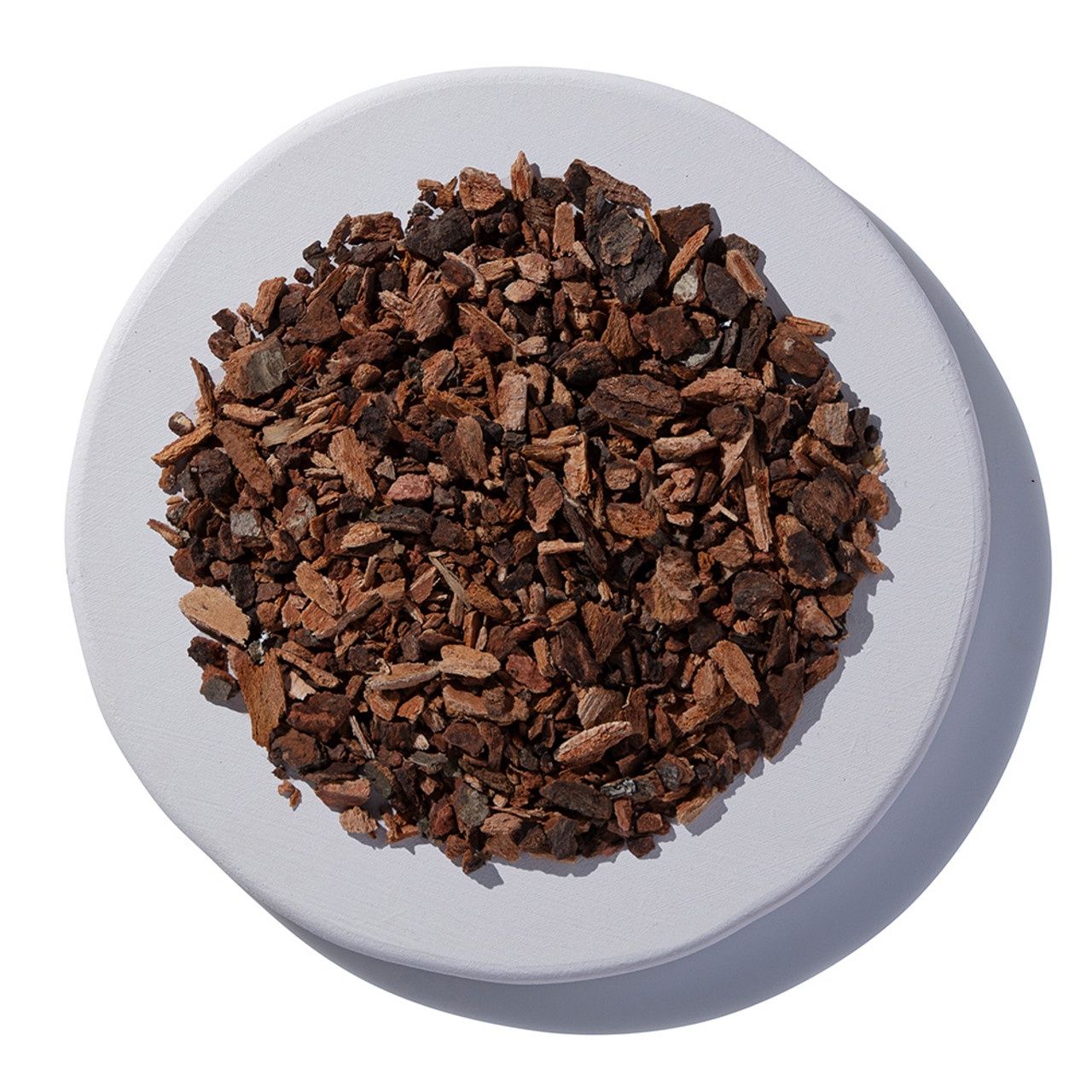WILD CHERRY BARK CUT & SIFT ORGANIC
Wild cherry bark has a variety of medicinal uses that date long back in history. It is especially well-known for its ability to treat soughs and other respiratory issues but can also help heal poor digestion and may also act as a mild sedative.
The botanical name for wild cherry is Prunus serotina and it belongs it the Rosaceae family. Other common names for the tree are Chokecherry, Wild Black Cherry, Virginia Prune, Cabana Cherry, Black Choke and Rum Cherry.
Description
The Cherry tree is originally native to Asia but was then imported into Europe and parts of North America. However, the Wild cherry tree is thought to be native to North America and it grows throughout many parts of the continent from Canada through the Carolinas to Florida.
The wild cherry tree is a relatively large, deciduous plant that can reach a hundred feet in height. It has rough brownish-red bark and beautiful dark oval leaves. During the spring, the tree bears delicate, little white flowers which are followed by a purple or red fruit that ripens during the late summer or early in the fall.
Health Benefits of Wild Cherry Bark
The reason that wild cherry bark has therapeutic value owes a great deal to its constituents. These include tannins, p-coumaric acid, kaempferol, quercetin, acetylcholine, benzaldehyde and caffeic acid.
Wild cherry bark also possesses various minerals such as calcium, potassium, magnesium, phosphorus, iron and zinc.
-
For Respiratory Conditions
-
As a Sedative
-
For The Digestive System
-
Worms and Parasites
-
Topical Uses

